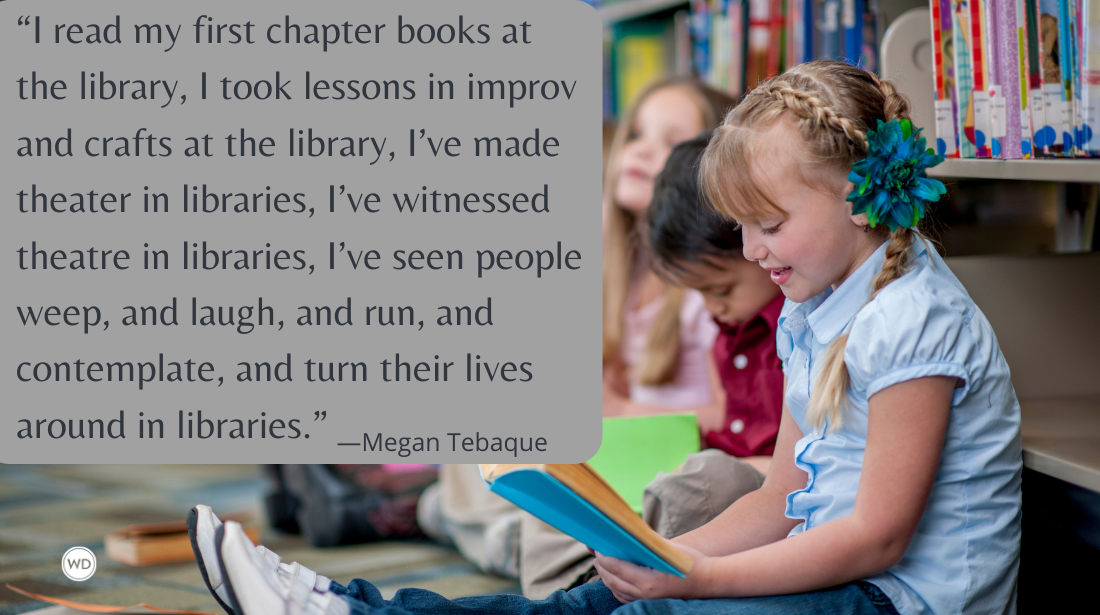These Words Were Meant for You: Publishing Thoughts for the Minority Writer
A new diagnosis led author Maria Dong to examine common writerly advice and who that advice benefits. Here, she discusses publishing for the minority writer.
A Twitter thread on how to write great characters—with a supposedly all-encompassing list of motivations—makes the rounds every so often. I used to love this thread (a checklist that wrestles all ambiguity to the ground? Sign me up!). But lately I’ve come to resent it, because I know something about myself that I didn’t when I first encountered it: I have ADHD, a diagnosis that has led to a deep retrospective on the many ways in which it has shaped the person I am.
Like others who occupy my branch of the neurodiversity tree, my drive to know things is unrelenting. I am a perpetual motion machine of questions, and my inability to just not ask them has gained and cost me jobs, romantic partners, courses of study, and led to a number of international relocations. It’s brought me to great professional and personal heights; it’s also set my life and relationships on fire.
Curiosity was not one of the motivations in that Twitter thread. There’s no way to apply its advice and write a protagonist like me, because like all the advice I’ve encountered in my publishing journey, it was constructed with a particular kind of author in mind: a largely white, cisgender, heterosexual, neurotypical author, writing for the same kind of reader.
Here are a few pieces of advice that aren’t.
1. Be wary of craft advice, i.e., you will have to make difficult artistic and even moral tradeoffs that other authors don’t.
Imagine your editor has just returned your last round of edits. Reading through, you notice that in the middle of a tense, character-development scene, your editor has highlighted the word “gyeran-mari” and left a comment:
?
And just like that, you have no idea what to do. On one hand, it’s not critical the reader understands that gyeran-mari is a rolled-up omelette—and you didn’t explain this on purpose, because you firmly believe in not catering to the white reader. On the other hand, you have been instructed repeatedly by many facets of publishing that white readers (who will form the majority of your readers) abhor the discomfort of “foreign” words, and they love complex, lush, evocative food descriptions complete enough to be used as recipes—but the way minority culture is often siloed into food-and-clothes “flavor” descriptions has always made you uncomfortable. From a craft perspective, show, don’t tell here would also slow the character’s emotional roll with information that is honestly not that important.
Hours later, as you debate whether you need to show or tell this food and what either option says about your commitment to rejecting the colonialist mindset that all books by non-white people should function as instructional guides, you realize your food description has now become a moral decision that reaches into your very roots.
What about bigger-picture things, like pacing and tone, or the acceptability of coincidence? How many question-mark comments can one person sustain before they find themself writing a detailed letter about how the sparse prose and individualistic, materialistic values reflected in modern American literature are a direct effect of the CIA-backed initiative to shape the Iowa Writer’s Workshop into promoting anti-communist literary values? (Just, uh, asking for a friend).
Unfortunately, you are the only person who can decide when, how, and how hard to pander to the “Average American Reader” of 12.6 books-per-year fame. Try to enjoy it, I guess.
2. Comp titles are a psychological weapon—that you can also exploit.
During the course of your publishing journey, you will need to push back on feedback. Sometimes, this will mean a simple STET with a one-line explanation, like “lesbian woman” is used here to be inclusive of non-binary folks.
But matters of taste and style—like plotting, pacing, and word choice—will be harder. One technique I found helpful was to always come armed with comp titles—if not books, then movies or television shows. By pointing out how a particular device was used or accepted elsewhere (in my case, in K-dramas), I was often able to convince someone that it belonged in my work. (And then my super-savvy editor usually made a note for the reader’s guide.)
3. Be really careful of who you listen to about “relatability.”
According to publishing, the average American reader would love it if they could directly insert themself into your book. Unfortunately, if your protagonist is a minority, disabled, queer, etc., they will be branded unrelatable or even impossible, and you will be accused of ruining your craft with politics. One reader comment about Liar, Dreamer, Thief disparages it for representing too many social issues in a single person, but I share every marginalization I depicted in Katrina Kim (with the exception that I am bisexual instead of lesbian, and mixed-race instead of just ethnically Korean).
Because I’m too weak to avoid reading reviews of my book, I resort to research. What other books did the person love? What did they hate? Nine times out of 10, I discover they’re really into Atlas Shrugged and move on.
But even complimentary reviews can be crushing. A lot of people have noticed how “kindly” I’ve written about Katrina Kim, given all her troubles—but all I did was portray a character like myself in the most realistic way I could—which means this compliment just reminds me of how rarely American fiction does that for the mentally ill.
4. Decide now who gets to know what.
It’s smart to go into this process knowing what you’re willing to share, and with whom, because you can’t take things back. For example, if you’re OK telling your agent about your mental illness, but not your editor, your agent can run interference for you when needed.
And know that if you represent any marginalization in your book, some readers will challenge that depiction as being bad representation or in bad faith. It’s worth evaluating these criticisms for next time (we all make mistakes) and it’s hard to feel maligned, but remember that 1.) reviews are for readers, and 2.) you have a right to privacy, especially with information that makes you feel traumatized or unsafe.
IndieBound | Bookshop | Amazon
[WD uses affiliate links.]
5. Decide if you’re comfortable being typecast.
If you’re an Asian-American whose first book is about mentally-ill Asian-Americans, an expectation can emerge that you will always write about Mentally-Ill Asian-Americans Asianing Aisanly. Maybe you are OK with this—but given the ADHD I mentioned in the beginning, I know I can’t write the same story over and over. I can’t even stay in one genre.
So, if you’re like me, one recommendation I have is to choose your agent wisely and be honest with them. The right agent can help you come up with a smart plan that establishes enough “brand flexibility” that you can write what you want.
If this advice didn’t prove helpful, please throw it away! Because although the stakes as a minority writer can feel brutal (Am I representing my identities well? Will it hurt other minority authors if my book doesn’t succeed?), this book is just one book. Your book, which is part of your career as an author, and no one else’s.
Maria Dong's short fiction, articles, and poetry have been published in over a dozen venues, including Apex, Apparition Literary Magazine, Augur, Best American Science Fiction and Fantasy, Fantasy Magazine, Fusion Fragment, Kaleidotrope, Khoreo, Lightspeed, and Nightmare, among others. Currently a computer programmer, she has had a diverse career as a property manager, English teacher, and occupational therapist. She lives with her partner in southwest Michigan, in a centenarian saltbox house that is almost certainly haunted, and loves watching K-Dramas and drinking Bell's beer. She can be reached via Twitter or her website, MariaDong.com.








